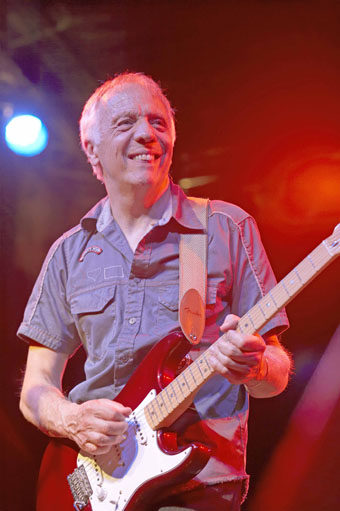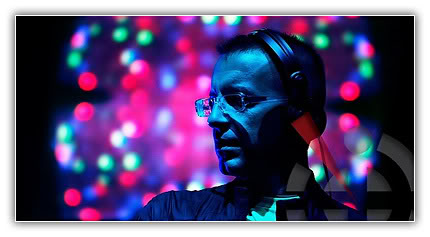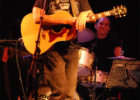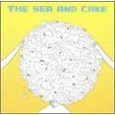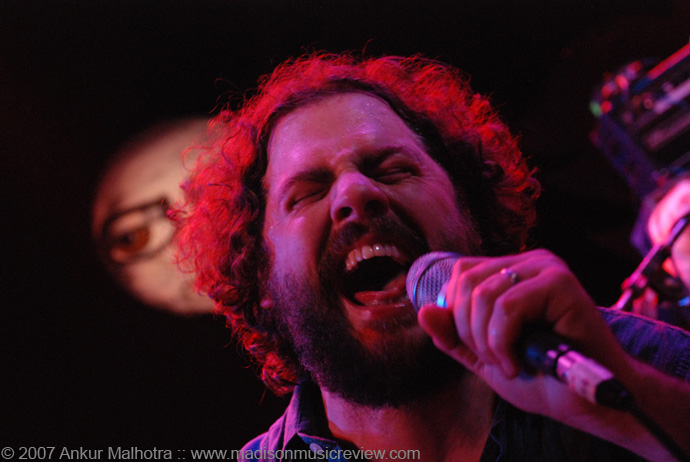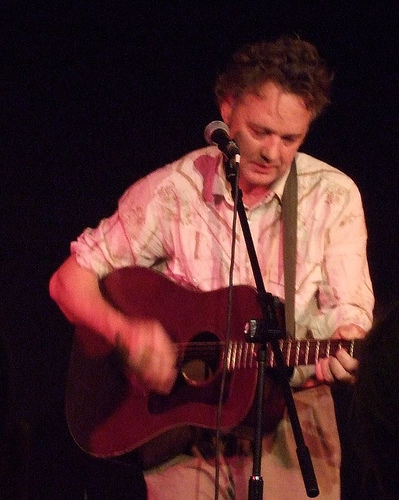Interview with Robin Judge
One of the things that make music festivals so much fun is that there are usually i) artists whose music I know fairly well and am excited to see,
ii) artists that I’m not so familiar with, but know I should be, and iii) artists “unknown” to me that I get to “discover.” One of the latter for me at DEMF was Robin Judge. I had the chance to meet Robin after her set, and she graciously agreed to answer a few questions in a subsequent email interview.
Robin Judge performs at Movement 07 – May 27th, 2007
You have described your recent sound as “soundscape meets dance-floor occasionally.” Do you perceive any particular trajectory to your musical evolution? If so, do you have a sense of where you are heading next?
I want to continue making all kinds of different music. Whatever mood I’m in, whatever I feel like bringing to the table on that particular day. I love so many styles of music – so many sounds – that I have a hard time picking just one direction. Music can express so many different concepts, emotions and ideas – it is an expansive universe of thought that can forever be explored. . . I’m currently working on some minimal techno tracks and some ambient sound scape works.
I listened to your performance/interview broadcast on Art of Beatz, and understand that you became involved in composing and performing out of your involvement with the dance scene, fascination with the music and eventually wanting the make the music as well. How long have you been composing, and what software and equipment did you initially use? What was your learning curve like? What tools are you using today?
From the first moment I heard electronic music I was hooked on the sound. Whether it was dance, ambient, experimental or pop-electronic, I just couldn’t get enough of it. In 1997-1998 I started messing around and learning how to make music with a friend on an old Atari running Cubase with loads of gear. I feel very grateful having had exposure to the instruments in that studio such as the vintage LinnDrum, Juno-106, SH-101, TB-303, TR-727, TR-808, TR-909, JP-8000, R-8, and the MicroMoog, to name a few.
Nothing ever came of the creations I made there, but it was good fun and educational. For the next few years I researched computers, computer music, and audio as a whole, in my spare time while attending art school. At one point I even contemplated dropping out of my studies and abandoning my degree in graphic design to enroll in audio production at a music school, but in the end, I decided to finish what I had started and obtained my degree and continued to pursue music in my spare time.
In 1998-1999 I built my first music studio. I built the computer myself from parts that I ordered, I made it as fast as I could by adding 7200rpm SCSII hard drives (which only professional recording studio’s had at the time, nowadays that speed is commonplace in desktop computers) the first version of the Intel Pentium chip running at 233Mhz, running Windows 98 with Cubase. I had a pair of Alesis Monitor Two’s, the Event Gina sound interface, Korg Z1 synth, Yamaha A3000 sampler, and the Yamaha 01V Digital mixing console. I was also getting heavily into VST’s and VSTi’s and expanding into various software programs. I spent years learning and playing around before ever making something significant.
In 2000-2001 I was very much in to software based music creation. I built a faster more powerful computer and stripped my studio down to just an RME Hammerfall sound card connected to the Yamaha 01V digital mixing console via fiber-optic-lightpipe.

In 2001-2002 I really started focusing my energy and nurturing my ideas. Those closest to me really pushed me to complete my tracks and see my ideas through to the end. In 2002 my first release came out on Mille Plateaux. Since then, I have added items such as a condenser microphone and Hi-MD recorder to my studio. I have added more software, even faster computers and still continue my quest to learn more audio production techniques and methods.
You’ve made several recordings with Tomas Jirku. What brought you together? And can you describe the collaboration process that you use with Tomas?
Over the years Tomas and I have had similar visions and similar musical aesthetics. We have a lot of fun working with one another. We work back and forth on tracks; he makes one part, I make another part and we do this moving from one track to another track. Usually joking around with working track titles along the way (no one ever sees those titles except for us) but they can get pretty silly. Hahaha.
I enjoyed seeing you at Mathew Jonson’s set, and I noticed that many artists turned out to listen to one another throughout DEMF. What were your highlights from Movement 07?
I think that it was an amazing event. The Paxahau team strives to create a top-notch environment that showcases the music in the best possible way – and they succeed at it. There were so many great sets and moments at the festival and at the after parties, that it would be impossible to choose.

Robin performing in front of Robert Rich’s analog patch panel “thing”
What music are you currently recommending to friends? What is on your turntable/ipod now?
About a 100 different things at the moment, but let’s see:
> Mathew Jonson – ‘Far Away’ Remix of Mlle Caro & Franck Garcia
> Frivolous – ‘Midnight Black Indulgence’
> Luciano – ‘Drunken Ballet’ on Shut Up And Dance Updated
What question do you wish I had asked you? And how would you answer it?
You could have asked me ‘why is the universe expanding and where is it expanding to?’ … and I could have responded by saying ‘there are many theories, most of which are too lengthly to discuss in this interview’. 🙂
I do want to hear more about the expanding universe, but I guess we will have to wait until our next interview!
Robin will be playing this Saturday 11:00 pm at Tini Martini in Chicago with Kate Simko. Catch this show if you can!
Recommended listening: Jirku-Judge, “Private Eyes”
myspace: http://www.myspace.com/robinjudge
web: robinjudge.com



